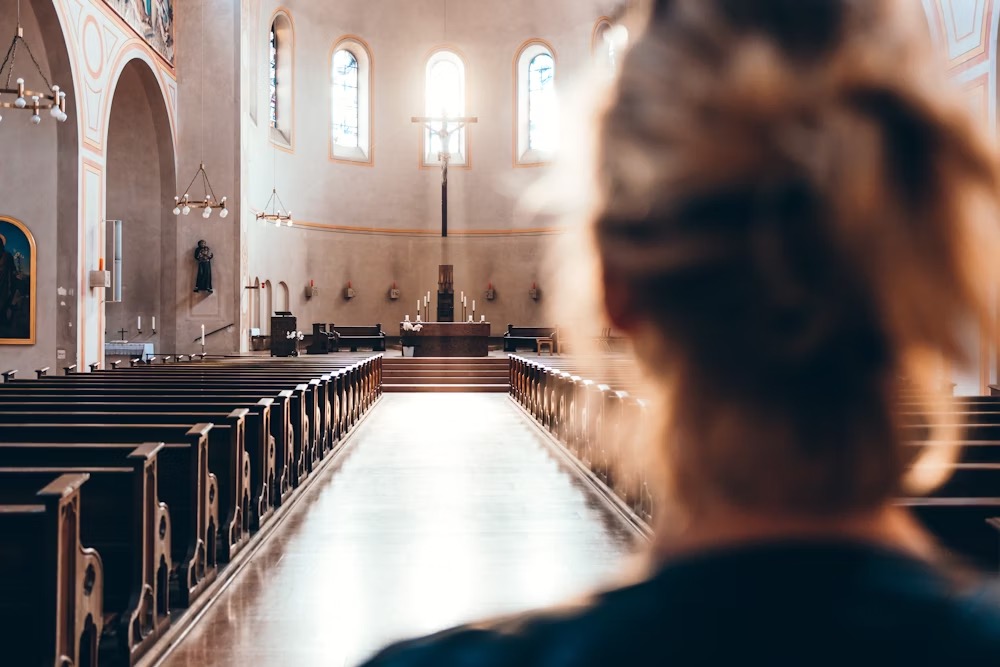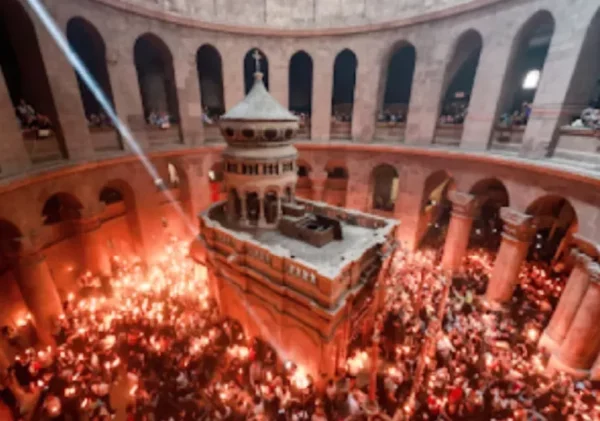Pilgrimage Destinations in the Philippines: A Journey of Faith and Heritage

SHARE
The Philippines, a country renowned for its stunning natural beauty, rich cultural heritage, and deeply ingrained religious traditions, is home to several significant pilgrimage sites. These sites draw millions of devotees and tourists alike each year, seeking spiritual enlightenment, solace, and a deeper connection to their faith. From ancient churches to sacred mountains, the Philippines offers a diverse array of pilgrimage destinations that reflect the country’s religious diversity and cultural history, especially this upcoming Holy Week.
Here are the famous pilgrimage sites:
1. Quiapo Church, Manila:
Located in the heart of Manila, Quiapo Church, officially known as the National Shrine of the Black Nazarene, is one of the most iconic pilgrimage sites in the Philippines. Devotees flock to the church year-round, but particularly during the Feast of the Black Nazarene in January, where millions participate in the grand procession, known as the Traslacion. The Black Nazarene is believed to be miraculous, with many devotees attributing healings and answered prayers to its intercession.
2. Our Lady of Manaoag Shrine, Pangasinan:
Nestled in the province of Pangasinan, the Our Lady of Manaoag Shrine is a revered Marian pilgrimage site. The shrine houses a centuries-old image of the Virgin Mary, believed to have miraculous powers. Pilgrims come from far and wide to pay homage to the revered Lady of Manaoag, seeking her blessings for healing, protection, and guidance.
3. Basilica Minore del Santo Niño, Cebu:
The Basilica Minore del Santo Niño in Cebu City is home to the oldest religious relic in the Philippines – the revered Santo Niño de Cebu (Holy Child of Cebu). Every January, devotees celebrate the Sinulog Festival, a vibrant and colorful event that honors the Santo Niño through dance, music, and religious processions. The basilica stands as a testament to the enduring faith of Filipinos and the deep-seated devotion to the Santo Niño.
4. Mount Banahaw, Quezon:
Mount Banahaw, considered a sacred mountain by many indigenous Filipinos, is a popular pilgrimage site for those seeking spiritual renewal and healing. The mountain is revered by Christians. Pilgrims undertake treks to the mountain’s peaks, seeking solitude, reflection, and communion with nature.
5. Our Lady of Piat Basilica, Cagayan:
Situated in the northern province of Cagayan, the Our Lady of Piat Basilica is a significant pilgrimage site dedicated to the Virgin Mary. The basilica is renowned for its dark-skinned statue of Our Lady of Piat, which is believed to have miraculous powers. Pilgrims visit the basilica throughout the year, seeking the intercession of the Virgin Mary for various intentions, including healing, protection, and thanksgiving.
6. Kamay Ni Hesus Shrine, Quezon:
Perched atop a hill in Lucban, Quezon, the Kamay Ni Hesus Shrine is a popular pilgrimage destination known for its towering statue of the Risen Christ and the Healing Church. Pilgrims ascend the 300-step stairway to reach the shrine, where they offer prayers, attend Masses, and seek spiritual healing and renewal.
7. Antipolo Cathedral, Antipolo City, Rizal:
Antipolo Church, officially known as the International Shrine of Our Lady of Peace and Good Voyage, is a significant pilgrimage site in the Philippines for several reasons: it’s religious significance, miraculous image, historical importance, scenic location, and cultural tradition. It holds a special place in the hearts of Filipino Catholics, drawing pilgrims seeking spiritual solace, blessings, and guidance from Our Lady of Peace and Good Voyage.
8. Grotto in San Jose Del Monte, Bulacan
The Grotto of Our Lady of Lourdes is located in Barangay Graceville, San Jose del Monte, Bulacan. It features a replica of the famous grotto in Lourdes, France, where the Virgin Mary is said to have appeared to Saint Bernadette Soubirous in 1858. This grotto serves as a place of prayer, reflection, and devotion for Catholics. Visitors often climb the steps leading to the grotto while praying the rosary or offering petitions to the Blessed Virgin Mary. The site is particularly crowded during religious holidays and special occasions, such as the Feast of Our Lady of Lourdes. Aside from the religious significance, the Grotto of Our Lady of Lourdes also offers a serene and picturesque environment, making it a popular destination for both spiritual and leisure purposes.
9. Baguio Cathedral, Baguio City
Baguio Cathedral, officially known as Our Lady of Atonement Cathedral, is a significant pilgrimage site, because of its combination of religious, historical, cultural, and natural elements for Catholics and tourists alike, drawing visitors from far and wide to experience its spiritual ambiance and architectural beauty. Situated atop a hill overlooking Baguio City, the cathedral offers a serene and picturesque setting conducive to prayer and meditation. Its elevated location adds to its appeal as a destination for pilgrims seeking a tranquil environment for spiritual retreats and contemplation.
10. Our Lady of Lourdes Grotto, Baguio City
Our Lady of Lourdes Grotto in Baguio City is a significant pilgrimage because of Marian apparitions, religious significance, spiritual retreat, tradition and history, and miraculous stories. The serene and peaceful environment of the grotto provides pilgrims with a conducive setting for reflection, meditation, and spiritual retreat.
The natural surroundings, including lush greenery and scenic views, enhance the spiritual experience for visitors seeking solace and tranquility. Many pilgrims attribute miraculous healings and answered prayers to their visits to the grotto.
These stories of faith and devotion contribute to the grotto’s reputation as a place of miracles and divine intervention, further inspiring pilgrims to make the journey to seek blessings and spiritual grace.
*Cover Photo/Thumbnail Photo: Unsplash
RELATED ARTICLES

I’m a Christian and I Got No Startup Money!

Tempted to Abandon My Calling

A Christian’s Call to Wise Listening









